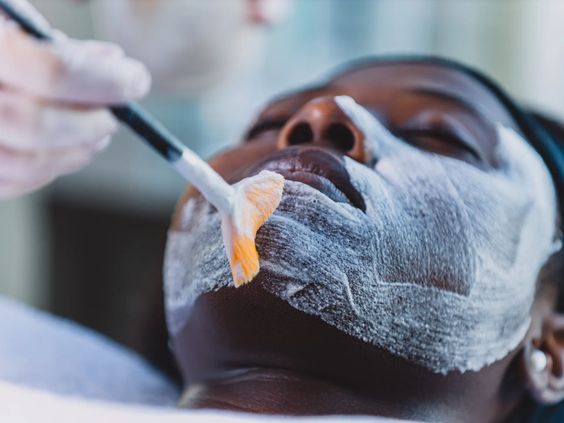Chemical peels are a cornerstone of skincare treatments, offering a solution to a variety of skin concerns. They work by exfoliating the outer layers of the skin, promoting the growth of new, healthy skin cells. In this blog, we’ll provide a detailed overview of the three main types of chemical peels—superficial, medium, and deep—and explore their benefits.
What Are Chemical Peels?
Chemical peels involve applying a chemical solution to the skin, causing controlled exfoliation and peeling. This process stimulates cell turnover and collagen production, revealing fresher, smoother skin. Depending on the depth of the peel, the treatment can address a range of skin issues, from fine lines to deep wrinkles and severe hyperpigmentation.
Types of Chemical Peels
1. Superficial Peels
Overview
Superficial peels, also known as “lunchtime peels,” use mild acids such as alpha-hydroxy acid (AHA) and beta-hydroxy acid (BHA). These peels are designed to exfoliate only the outermost layer of the skin (epidermis).
How They Work
The chemical solution is applied to the skin for a short period before being neutralized and washed off. This gentle treatment stimulates cell turnover and removes dead skin cells, promoting a healthier complexion.
Benefits
- Minimal Downtime: Superficial peels require little to no downtime, making them convenient for busy schedules.
- Brightens Skin Tone: They help to improve overall skin brightness and clarity.
- Smooths Rough Texture: Superficial peels can smoothen rough skin texture and improve mild acne.
- Addresses Mild Pigmentation: They can reduce the appearance of light hyperpigmentation and sun spots.
Ideal For
- Individuals new to chemical peels
- Those with sensitive skin
- Maintenance treatments for general skin health
2. Medium Peels
Overview
Medium peels use stronger acids, such as trichloroacetic acid (TCA) and glycolic acid, to penetrate the outer and middle layers of the skin.
How They Work
The chemical solution is applied to the skin, causing controlled damage to the epidermis and upper dermis. This deeper exfoliation promotes significant cell turnover and collagen production.
Benefits
- Reduces Fine Lines and Wrinkles: Medium peels effectively reduce the appearance of fine lines and moderate wrinkles.
- Improves Skin Discoloration: They can address more pronounced hyperpigmentation, including age spots and melasma.
- Treats Acne Scars: Medium peels are effective in reducing the appearance of acne scars.
- Enhances Skin Texture: They provide a noticeable improvement in skin texture and tone.
Ideal For
- Individuals with moderate skin concerns
- Those looking to reduce signs of aging
- People with stubborn pigmentation issues
3. Deep Peels
Overview
Deep peels use potent acids like phenol to penetrate the deeper layers of the skin. These peels offer the most dramatic results but come with increased recovery time and risk.
How They Work
The chemical solution is applied to the skin and left on for a longer duration. This deep treatment removes damaged skin cells from the epidermis and reaches the lower dermis, stimulating extensive cell regeneration and collagen production.
Benefits
- Significant Reduction in Deep Wrinkles: Deep peels can dramatically reduce deep wrinkles and fine lines.
- Treats Severe Sun Damage: They are highly effective in treating severe sun damage and deep pigmentation issues.
- Long-Lasting Results: The results of deep peels are long-lasting, often requiring only one treatment for substantial improvement.
- Improves Severe Acne Scars: Deep peels can significantly diminish the appearance of severe acne scars.
Ideal For
- Individuals with severe skin concerns
- Those looking for dramatic, long-lasting results
- People willing to undergo a longer recovery period
Choosing the Right Chemical Peel
Selecting the right chemical peel depends on your skin type, concerns, and desired results. Here are some factors to consider:
- Skin Type: Consult with a dermatologist to determine which peel is suitable for your skin type and condition.
- Skin Concerns: Identify your primary skin concerns—whether it’s aging, pigmentation, or texture issues—and choose a peel that targets those concerns.
- Downtime: Consider how much downtime you can afford. Superficial peels have minimal downtime, while medium and deep peels require more recovery time.
- Desired Results: Determine your desired outcomes. For mild improvements, a superficial peel may suffice, but for more dramatic results, a medium or deep peel may be necessary.
Conclusion
Chemical peels are a versatile and effective solution for various skin concerns. Whether you’re looking to brighten your complexion with a superficial peel, address moderate wrinkles and pigmentation with a medium peel, or achieve dramatic results with a deep peel, there’s an option to suit your needs. Always consult with a qualified skincare professional to determine the best treatment for your skin and ensure safe, effective results.

